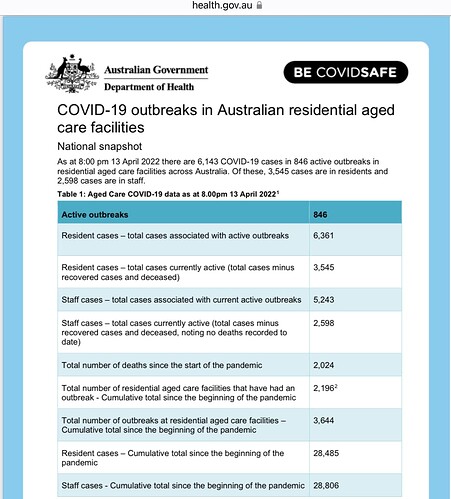It’s a useful suggestion. There are those of us who have immediate family in aged care, and of those some of us have the sole responsibility through Powers of Attorney. Many of those in aged care have limited ability to influence the system around them. There are also those in care whose reality has been altered by changes in the mind, and rely on others to give them purpose and keep them safe.
The current system if it has been designed and left to the experts is a miserable failure. While we are not experts, we can relate first hand both the benefits and failings relating to one resident. A wider reality is we have 3 near neighbours we know well enough to share tea and cakes, a beer or wine or … who have or recently had immediate family in the same facility. A shared experience.
If it’s up to the experts, either they are far from expert, or those they report to are deaf dumb and blind. It’s a personal opinion. That there are many aged care facilities found to be deficient, says little positive about how our government has designed and regulated the delivery of aged care services.
With the basic daily fee already taking 85% of a residents aged care pension, which part of the other 15% are you suggesting they give up?
The impact of this payment is, of course, that individuals in aged care may only have access to 15% of any aged pension (currently $9.45 per day or $132.32 per fortnight) to pay for incidentals, including clothing, unless they have access to other income or assets. Even individuals who do not qualify for a full or partial aged pension, and who make significant accommodation payments, can find themselves in a difficult position if in residential aged care for a significant time.
It seems a rather callous suggestion, as the 15% must also cover the cost of medications up to the level of the safety net, and any other small luxuries such as barista coffee, optical prescriptions, dentures and dental work, etc.
It seems even more callous a suggestion when the numbers of those in Aged Care Facilities at anytime total less than 200,000. Those who have the means are mostly outside of Aged Care facilities and supported by a family, limited government assistance or personal wealth. Those in Aged Care Facilities in many instances have limited means, with little alternative.
Perhaps for others offering support or constructive observations, it would be helpful to know who is able to speak from recent first hand experience.
